Insider Tips for Enjoying Yellowstone in Winter
Discover why visiting during the secret season should be at the top of your bucket list.
Winter is Yellowstone National Park’s quietest season, but we’ll share a lesser-known fact: it’s actually the best time of year to visit. Many insiders will attest that the key to a magical, once-in-a-lifetime trip is experiencing the wonder of the park in winter.
Some of the best wildlife, geyser viewing, and photography opportunities arise in the dead of winter, when the snow-white landscape provides the contrast that makes animals and thermal wonders appear even more dramatic.
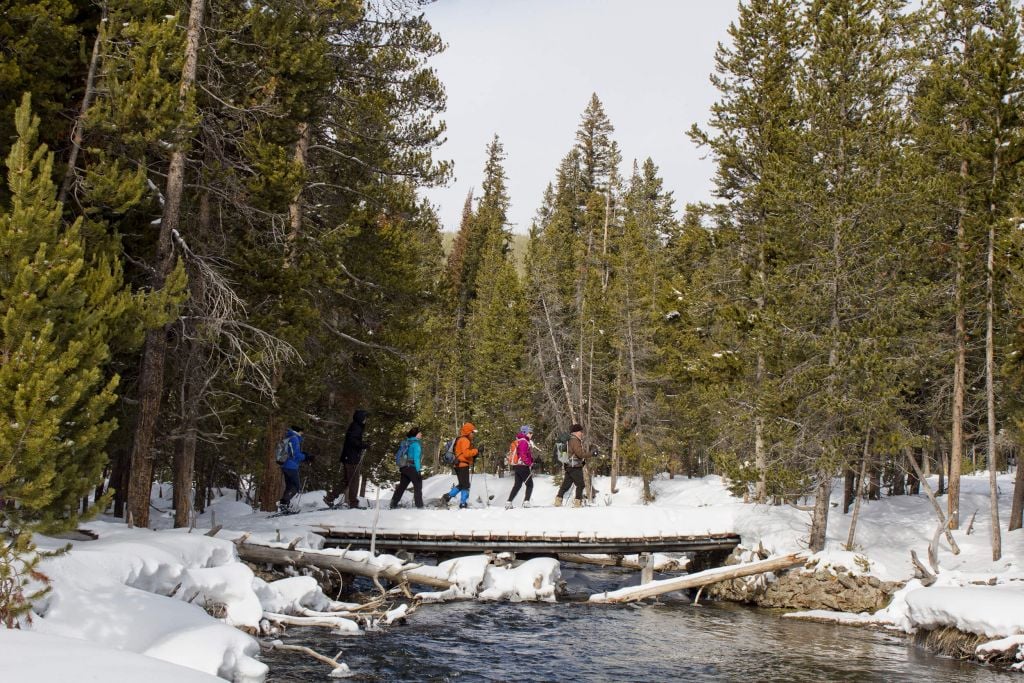
Two park lodges — Old Faithful Snow Lodge and Mammoth Hot Springs Hotel & Cabins, about 50 miles apart — remain open from mid-December to early March to accommodate winter guests.
Starting in mid-December, a plethora of fun winter activities cater to all kinds of visitors. If you dream of exploring the stunning landscapes, strap on some snowshoes or cross-country skis for the ultimate adventure. Or take a whirl around the ice rink for an outdoor activity the whole family can enjoy. If lower-key pursuits are your objective, witness wildlife from the comfort and warmth of a snowcoach. Or simply cozy up with a good book in front of a lodge fireplace. There’s something for everyone at the world’s first national park.
Here are some expert tips for planning the ultimate vacation:
Winter Wildlife Watching
Yes, bears take to their dens for a long winter’s nap, but other Yellowstone denizens are up and about. Moreover, animals like wolves and moose can be easier to spot, thanks to their heightened contrast against a blanket of pristine snow and their frozen footprints make animals easier to track.
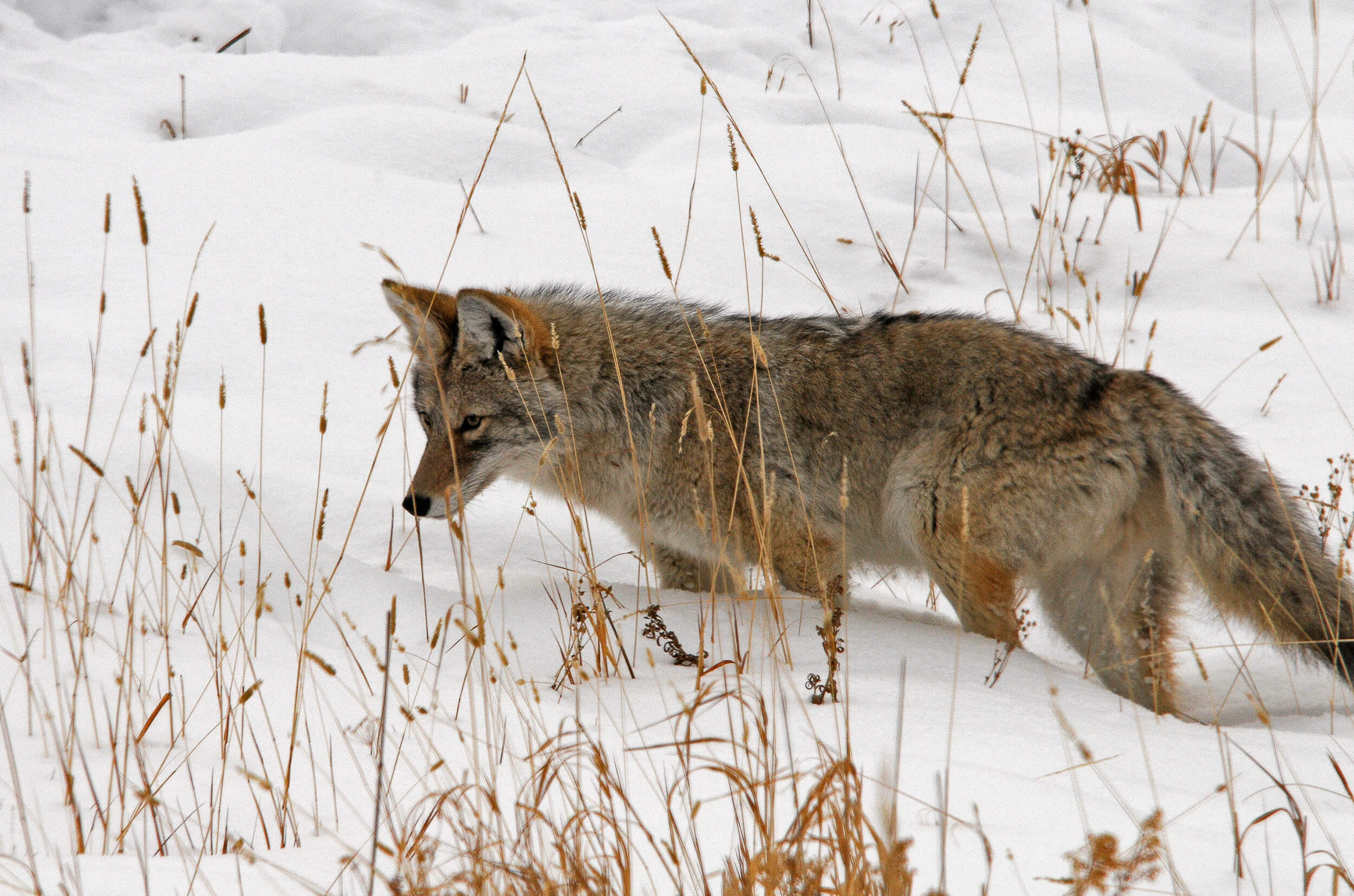
Tips:
- A premier viewing spot is Lamar Valley in the park’s Northern Range. You’ll also find serious wolf watchers here along the roadsides behind powerful spotting scopes. Watch for bison herds trudging through the unfettered landscape, their breath steamy in the winter air.
- Bison often convene near the park’s thermal features for an impromptu steam bath.
- As in other seasons, wildlife is most active at dawn and dusk.
- Stay at least 25 yards away from bison, elk, and pronghorn, and 100 yards or more from wolves and bears. (During warm winters, bears have been spotted as early as February.)
- It’s easy to go car-free in winter. Snowcoaches shuttle visitors between Old Faithful and Mammoth Hot Springs, and venture into the surrounding territory on guided outings. The Madison Wildlife Excursion follows a scenic seven-mile corridor in search of wildlife. The Lamar Valley Wildlife Tour, departs from the Mammoth Hot Springs Hotel in the early morning and heads towards Lamar Valley, it includes a morning snack and a boxed lunch.
- Interior park roads, except for one, are closed to regular traffic during the winter (usually from early November to early April). The one park road open to personal vehicles in winter is from the north entrance in Gardiner, Montana, through the Northern Range of Yellowstone to Cooke City, Montana. This is an out-and-back route, as the road is no longer plowed after Cooke City. While this road is paved, four-wheel or all-wheel drive is recommended.
- Pack essentials, such as binoculars, a foam-rubber mat to stand on and prevent the cold from penetrating the soles of your shoes, a thermos filled with a hot beverage, and food to fuel your wanderings. (You can order boxed lunches from the Mammoth Hot Springs or Old Faithful Snow Lodge Dining Rooms.)
Photo Safaris
Yellowstone’s dramatic landscapes become all the more breathtaking against winter’s icy backdrop when the muted light brings an ethereal quality to photos.
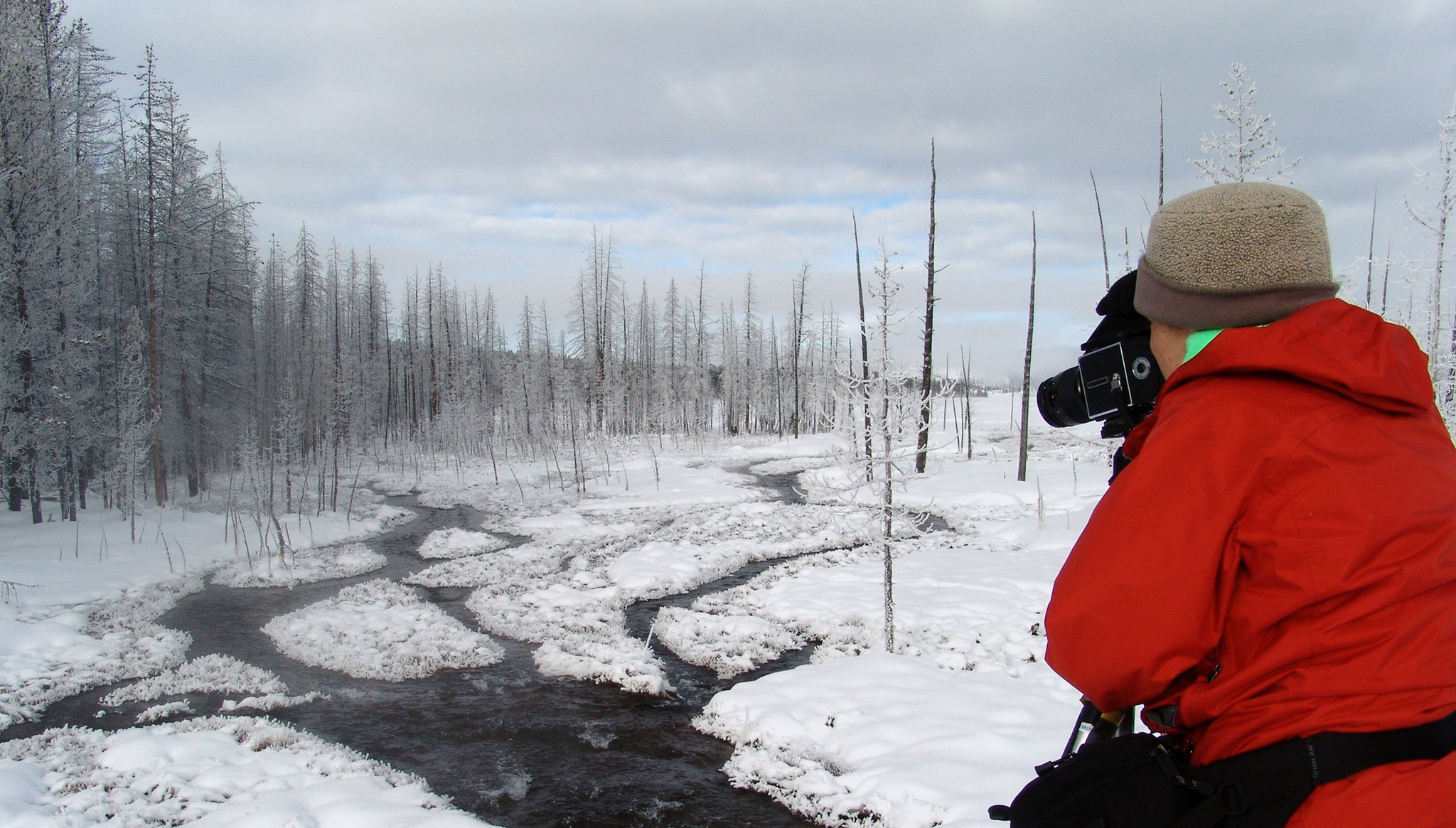
Tips:
- The pros get out early to take advantage of the morning’s dramatic light.
- Leave the details to the experts by booking an all-day Winter Photo Safari along the Firehole and Madison River corridors. Guided instruction and lunch are part of the tour.
- Dress in layers and wear warm boots with thick soles. Consider wearing thin, rubber-tipped gloves while shooting and slip a pair of mittens over them when you don’t need your fingers.
- Keep your camera cold and your batteries warm. If your camera is warm, the lens will fog up when cold air hits it. Batteries drain more rapidly in cold weather, so tuck extras in a pocket or other warm place. If you’re using a cellphone camera, protect your device by keeping it close to your body for warmth.
- Protect your camera lens near erupting geysers, as silica in the water of thermal features can bond to glass and plastic.
Snowshoeing
The simple, yet efficient, snowshoe enables you to glide effortlessly over untrodden paths without getting mired in snow. It’s a fantastic way to experience off-the-beaten-path spots. A bonus: it’s easy. If you can walk, you can snowshoe.
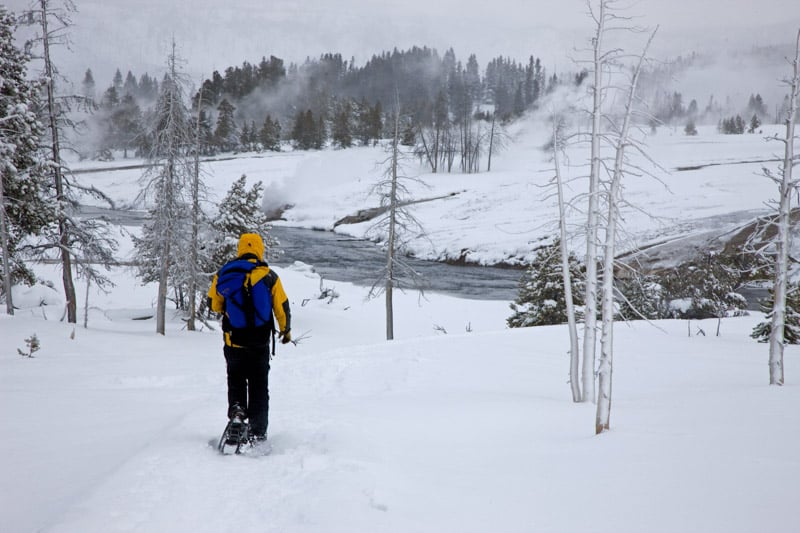
Tips:
- Join like-minded souls on an Old Faithful Snowshoe Tour. The three-hour trek maintains a leisurely pace on mostly flat terrain and ventures into forested wonderlands and along the Firehole River. Or rent a pair of snowshoes at the Bear Den Ski Shops in Mammoth Hotel or Old Faithful Snow Lodge and go it on your own.
- Dress in layers so you can shed outerwear as you warm up. Moisture-wicking fabrics such as silk, wool, and some synthetics are best (avoid cotton).
- Bring plenty of water.
- Gaiters — waterproof coverings worn over the lower pant legs — prevent snow from getting into your boots.
- Sunscreen — even on cloudy days — is essential. So are sunglasses.
- Protect your phone by tucking it into a waterproof case that allows you to take pictures through the plastic.
- Carry a foam rubber pad to sit on.
- Follow proper trail etiquette and only snowshoe on dedicated paths. Do not break or walk on cross-country ski tracks.
Cross-Country Skiing
With a variety of groomed ski trails for all ability levels, Yellowstone is a paradise for cross-country aficionados.
You can download helpful National Park Service maps online, but before setting out, check in at the Bear Den Ski Shop at Mammoth Hot Springs Hotel or Old Faithful Snow Lodge for current conditions. The shops rent ski gear and you can even book a lesson.
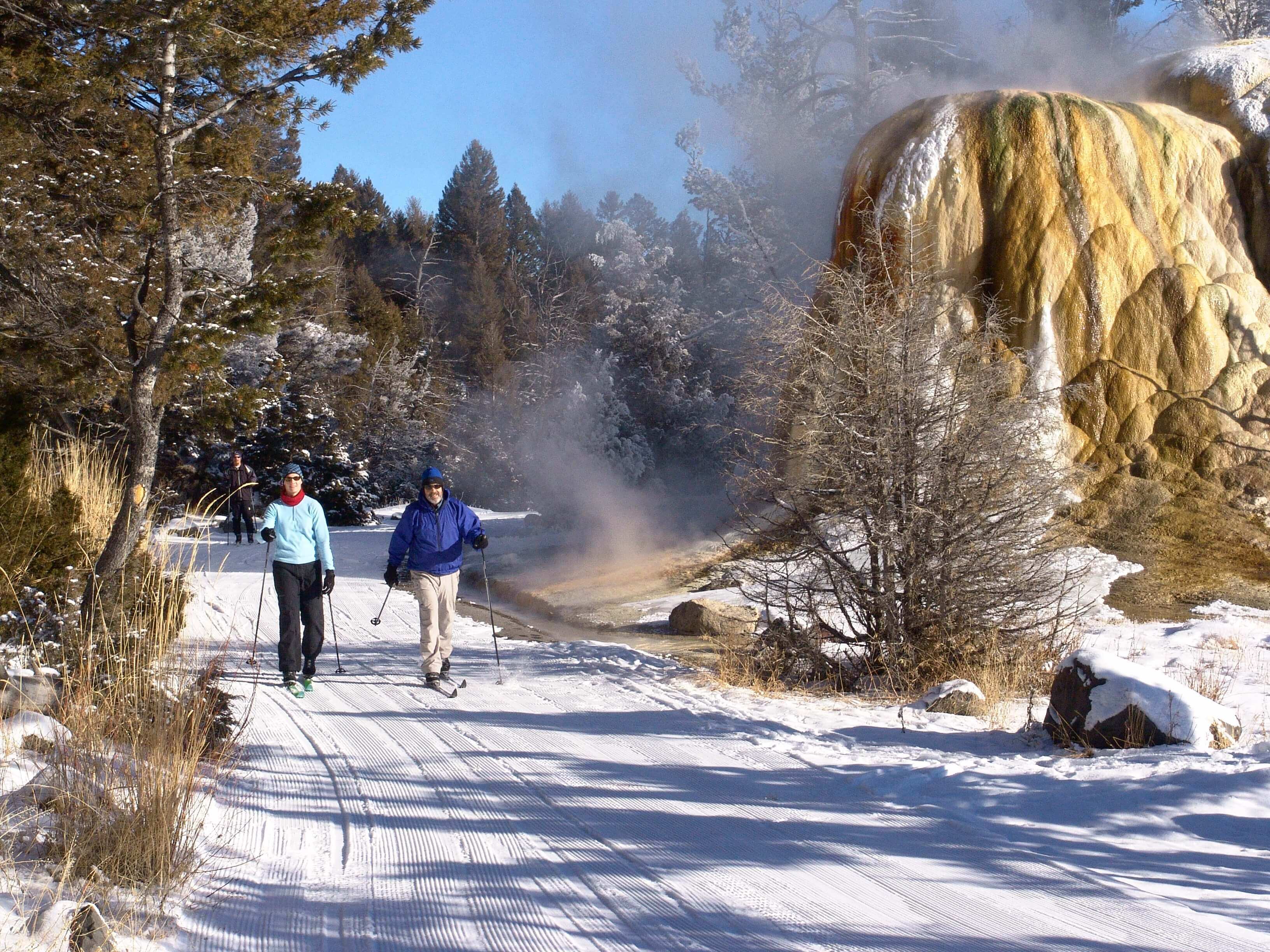
Tips:
- Ski shuttles ferry visitors from Mammoth Hot Springs to the Indian Creek and Bunsen Peak cross-country ski areas. Another shuttle carries skiers from Old Faithful Snow Lodge to nearby trails, including Lone Star Geyser.
- Join a group for a full-day ski tour in the park’s spectacular Grand Canyon of the Yellowstone. A shorter five-mile guided Lone Star Excursion hugs the Fire Hole River.
- Let experts guide you on custom ski tours departing from Mammoth.
- Pack snacks. All that exercise is bound to make you hungry.
Geyser Gazing
These geothermal dynamos appear even more stunning in winter. Ice formations on nearby trees and manmade structures add to the otherworldly setting. You can even get a sauna effect by standing in their steamy wake.
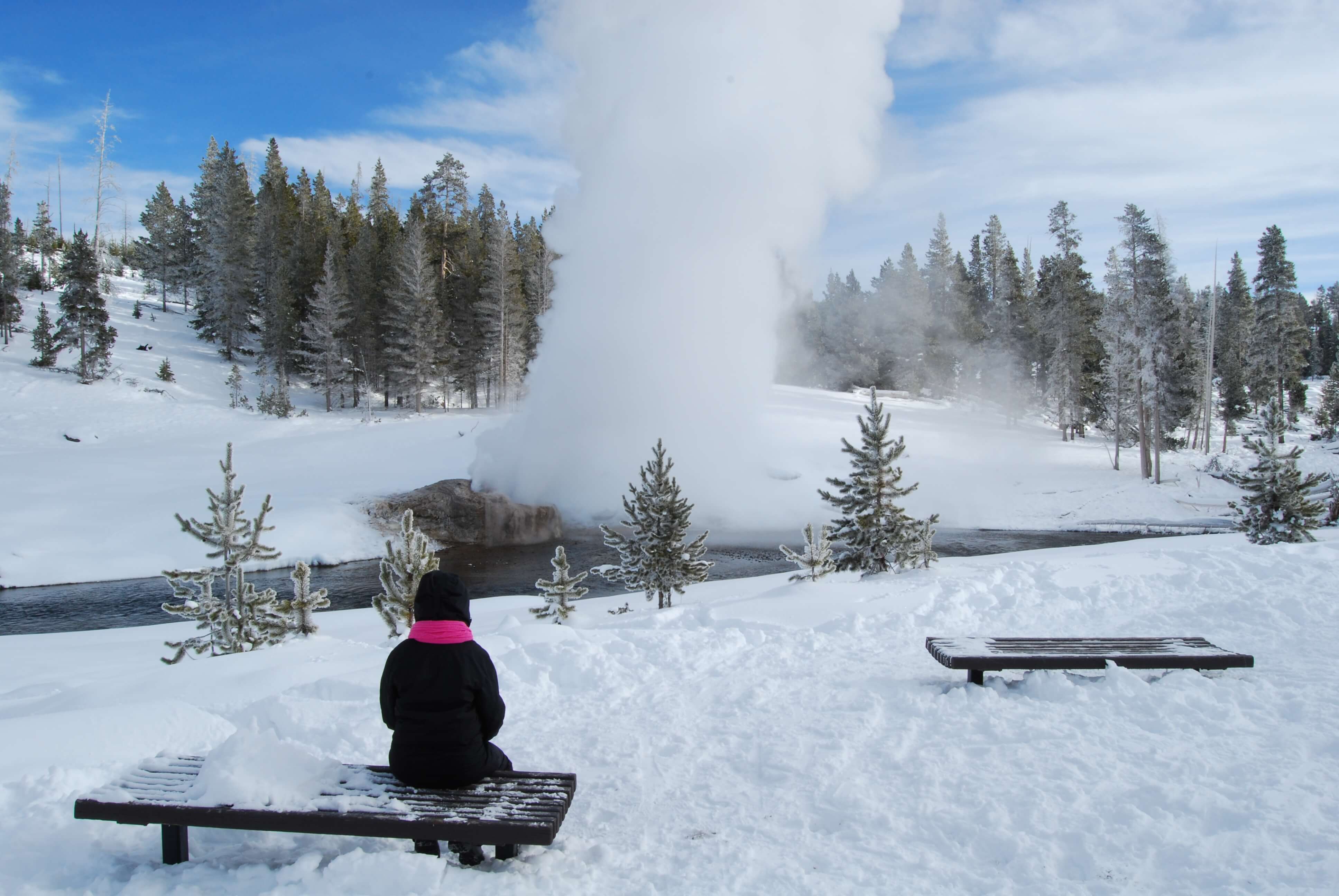
Tips:
- Check with the NPS for updated predictions for when eruptions are expected.
- Bring a pad to sit on while you wait for the show.
- Protect your camera lens near erupting geysers, as silica in the water of thermal features can bond to glass and plastic.
Ice Skating
Yellowstone makes two outdoor ice skating rinks (weather permitting) at Old Faithful Snow Lodge and Mammoth Hot Springs Hotel.
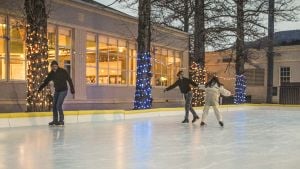
Tips:
- Ice time is free, and if you’re a hotel guest, skates are complimentary. You’ll find skates located inside near the exit to the rink.
- Work up an appetite for dinner by taking an evening whirl around a lighted rink.
Snowcoach Touring
Sit back and enjoy the ride as an expert takes the wheel in one of the park’s specially equipped snowcoaches. The drivers know the lay of the land and are on the lookout for wildlife and other features you might miss on your own.

Tips:
- Snowcoach tours provide the comfort of a heated coach and the expertise of a knowledgeable guide. Try the three-hour Firehole Basin Winter Adventure and enjoy spectacular scenery and wildlife watching. Or the guest favorite two-hour evening Steam, Stars and Winter Soundscapes that focus on sounds rather than sights. Want something a little longer? How about the five-hour Norris Geyser Basin Tour, a popular sight in summer that’s even more spectacular in winter.
- Bring your camera. The coaches’ panoramic windows are photo-friendly.
- Pack a small bag with snacks, drinks, and other essentials. Please note that space in the coach is limited for bags, so make sure it’s something that can fit on your lap if needed.
Staying in the park is the best way for visitors to experience all it has to offer. Once the day visitors leave, Yellowstone remains for the in-park overnight guests alone. Imagine watching Old Faithful Geyser erupt under a winter starry sky with absolutely no one else around. Yellowstone National Park Lodges offer tours and activities guided by Certified Interpretive Guides that help create memorable experiences. For more information on winter lodging, tours, and vacation packages, visit yellowstonenationalparklodges.com
For A World of Unforgettable Experiences® available from Xanterra Travel Collection® and our sister companies, visit xanterra.com.
Want to experience Yellowstone in-depth? See what makes Yellowstone National Park a great place to work for a season or longer!